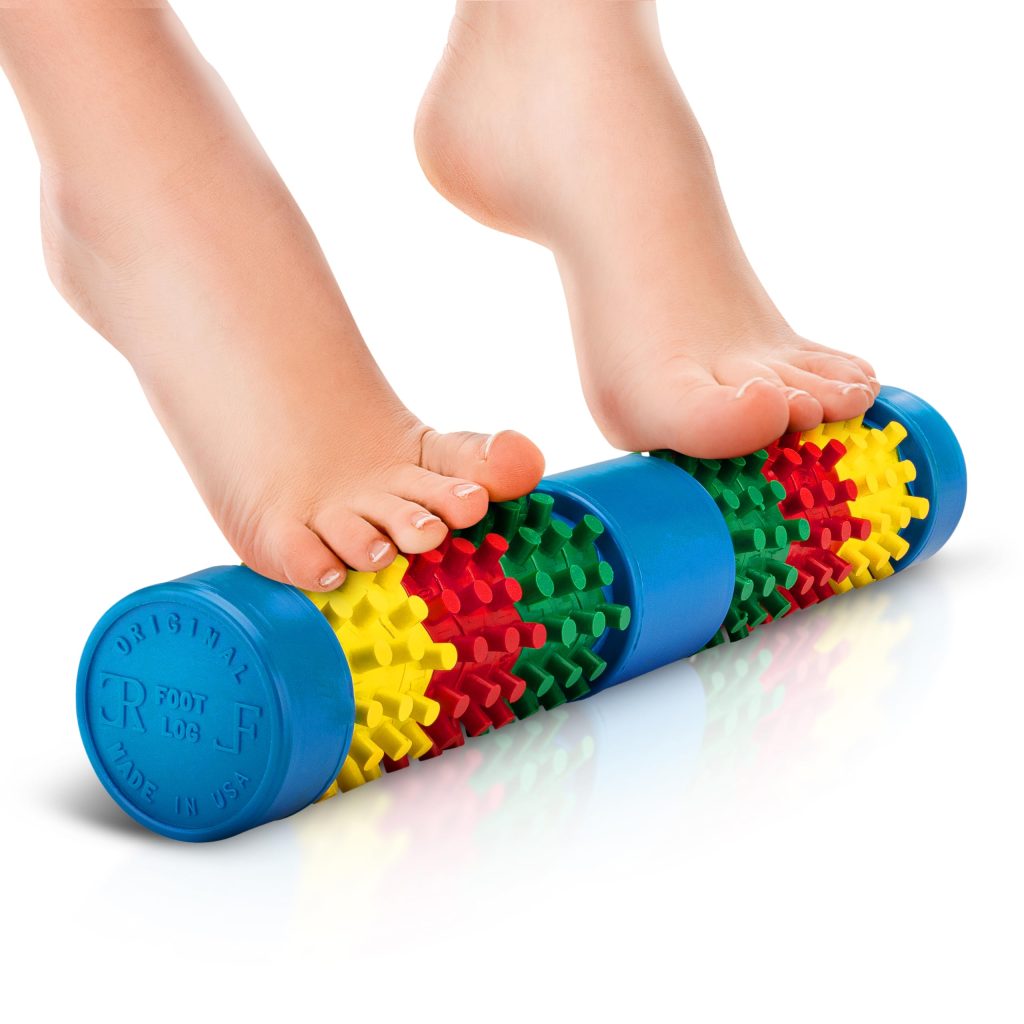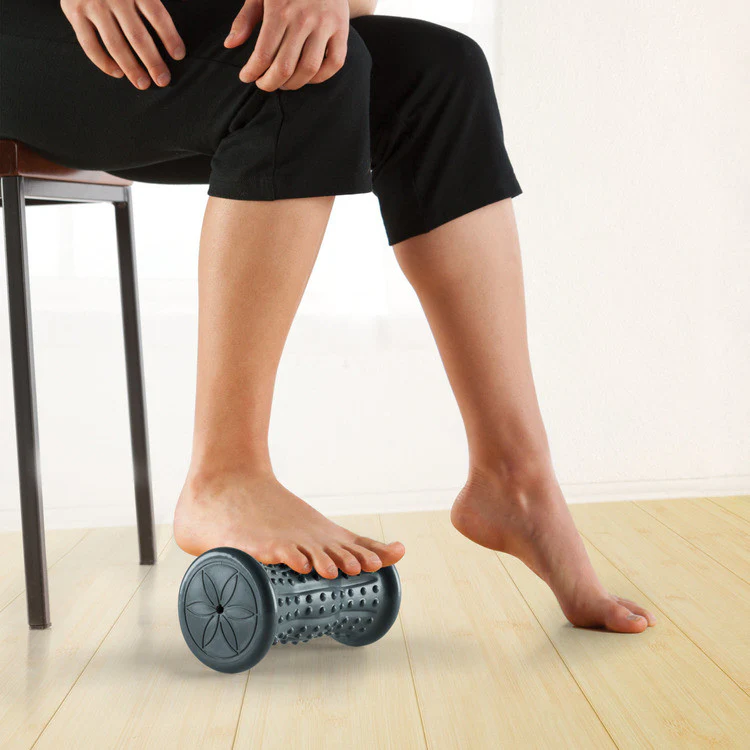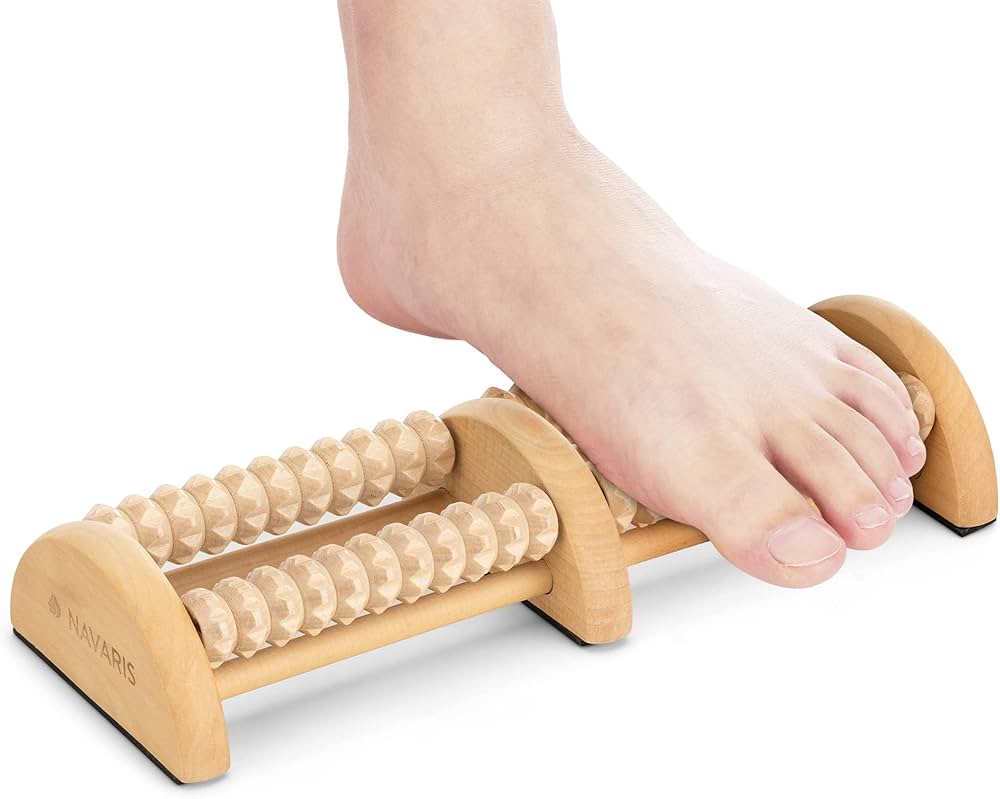Foot Massage Rollers: Relieve Tension & Boost Circulation in Tired Feet (Guide 2025)
Discover the ultimate relief for foot pain with foot massage rollers devices. This article explores the author’s personal experience, highlighting how these versatile tools alleviate tension and enhance circulation. Learn about different types of rollers, key features to consider, and practical usage tips to improve foot health and comfort,
As someone who spends hours on their feet, I know firsthand how painful and tiring it can be. That’s why I’m excited to share my discovery of foot massage roller devices. These nifty tools have been a game-changer for relieving tension and improving circulation in my tired, achy feet.
Foot massage rollers come in various shapes and sizes, but they all serve the same purpose: to provide relief and relaxation to overworked feet. Whether you’re an athlete, a busy professional, or just someone who enjoys a good foot rub, these devices offer a convenient way to soothe sore muscles and promote better blood flow. In this article, I’ll dive into the benefits of foot massage rollers and how they can help you step into comfort.
Understanding Foot Massage Rollers
Foot massage rollers are designed to target specific pressure points on the feet, promoting relaxation and relief. These devices come in various shapes and sizes, each offering unique benefits for foot health and comfort.
Benefits for Tension and Circulation
Foot massage rollers effectively reduce tension in the feet by applying pressure to key areas. They stimulate blood flow, enhancing circulation throughout the lower extremities. This improved circulation helps:
- Reduce swelling and inflammation
- Alleviate muscle soreness
- Decrease foot fatigue
- Promote faster recovery after physical activity
- Ease symptoms of plantar fasciitis
Regular use of foot massage rollers can lead to improved overall foot health and reduced discomfort from conditions like arthritis or diabetic neuropathy.
Types of Foot Massage Rollers
There are several types of foot massage rollers available, each with distinct features:
- Wooden rollers: Traditional design, often with ridges or nubs for targeted pressure
- Plastic rollers: Lightweight and portable, ideal for travel
- Metal rollers: Durable and can be cooled for added relief
- Electric rollers: Provide automated massage with variable settings
- Foam rollers: Softer option for gentler massage
- Ball rollers: Allow for precise pressure point targeting
Some rollers incorporate additional elements like magnets or heating functions for enhanced therapeutic benefits. The choice of roller depends on individual needs, preferences, and specific foot conditions.
Key Features to Consider
When choosing a foot massage roller, it’s crucial to evaluate several key features to ensure you get the most effective device for your needs. Here’s what I consider essential when selecting a foot massage roller:
Manual vs. Electric Devices
Manual foot massage rollers offer simplicity and control. I appreciate their portability and ease of use, making them ideal for on-the-go relief. They’re typically more affordable and don’t require batteries or charging. Electric devices, on the other hand, provide automated massage functions. These often include multiple settings and can deliver a more intense, hands-free massage experience. I find electric rollers particularly useful for those with limited mobility or who prefer a more consistent massage intensity.
Heat Therapy Options
Heat therapy is a valuable feature in foot massage rollers. Devices with heat functionality help to relax muscles, increase blood flow, and enhance the overall massage experience. I’ve noticed that heat therapy is especially beneficial for relieving deep-seated tension and soothing sore muscles. Some rollers offer adjustable heat settings, allowing users to customize the temperature to their comfort level. When considering a heated roller, I always check for safety features like automatic shut-off to prevent overheating.
Massage Techniques and Intensity Levels
The variety of massage techniques and intensity levels is a critical factor in choosing a foot massage roller. Different rollers offer various massage styles, such as kneading, rolling, and shiatsu. I look for devices that provide multiple intensity levels, allowing for a gentle massage on sensitive days or a more vigorous treatment when needed. Some advanced rollers even offer customizable programs targeting specific foot areas. The ability to adjust massage techniques and intensity ensures the device can cater to changing needs and preferences over time.
Choosing the Right Foot Massage Roller
Selecting the perfect foot massage roller is crucial for effective tension relief and improved circulation. I’ll guide you through the key factors to consider when making your choice.
Assessing Your Specific Needs
Identifying your unique requirements is the first step in choosing a foot massage roller. I focus on the following aspects:
- Foot condition: Plantar fasciitis, arthritis, or general soreness require different roller types
- Intensity preference: Soft foam for gentle massages or firm plastic for deep tissue work
- Usage frequency: Daily use demands durability, while occasional use allows for more flexibility
- Massage area: Full foot coverage or targeted relief for specific zones like arches or heels

Size and Portability Factors
The size and portability of a foot massage roller impact its convenience and effectiveness. I consider:
- Roller length: Longer rollers (10-12 inches) for both feet simultaneously, shorter ones (6-8 inches) for targeted relief
- Weight: Lightweight options (under 1 pound) for travel, heavier models (2-3 pounds) for stability during use
- Compactness: Foldable or collapsible designs for easy storage and transportation
- Versatility: Multi-use rollers that work on calves and arms as well as feet
| Price Range | Features | Durability |
|---|---|---|
| $10-$30 | Basic manual rollers, simple designs | 1-2 years |
| $30-$70 | Enhanced textures, multiple roller types | 2-3 years |
| $70-$150 | Electric options, heat therapy, advanced features | 3-5 years |
| $150+ | Professional-grade, multi-function devices | 5+ years |
- Long-term value: Higher initial cost often translates to longer lifespan and better performance
- Feature priorities: Determine which functions are essential and which are nice-to-have extras
- Warranty and customer support: Factor in post-purchase protection and assistance
Using Foot Massage Rollers Effectively
I’ve found that proper technique and consistency are key to maximizing the benefits of foot massage rollers. Here’s how to use these devices effectively for optimal relief and circulation improvement.
Proper Techniques for Maximum Benefits
To get the most out of your foot massage roller:
- Start with light pressure: Begin by gently rolling your foot over the device.
- Target specific areas: Focus on the arch, heel, and ball of your foot.
- Vary your movements: Use circular motions, back-and-forth rolls, and static pressure points.
- Adjust intensity: Gradually increase pressure as your feet become accustomed to the sensation.
- Use both feet: Alternate between feet to ensure balanced treatment.
- Incorporate stretches: Combine rolling with foot flexes and toe spreads for enhanced benefits.
- Stay hydrated: Drink water before and after your massage to support circulation.
- Frequency: Use the roller 3-5 times per week for maintenance, or daily for chronic conditions.
- Duration: Spend 5-15 minutes per session, depending on your needs and time constraints.
- Time of day: Roll in the morning to energize feet or in the evening to relieve daily tension.
- Post-activity: Use immediately after standing, walking, or exercising for faster recovery.
- Listen to your body: Adjust frequency and duration based on how your feet respond.
- Consistency: Maintain a regular routine for long-term benefits and foot health improvement.

Complementary Tools and Practices
While foot massage rollers are effective on their own, combining them with other foot care methods and lifestyle changes can enhance their benefits. I’ve found that a holistic approach to foot health yields the best results.
Combining Rollers with Other Foot Care Methods
Foot massage rollers work well in conjunction with:
- Compression socks: These improve circulation and reduce swelling when worn after roller use.
- Epsom salt soaks: A 15-minute soak before rolling helps relax muscles and soften skin.
- Foot creams: Applying moisturizer after rolling keeps skin supple and prevents dryness.
- Toe stretchers: Using these after rolling helps realign toes and improve flexibility.
- Acupressure mats: Standing on these mats complements the targeted pressure of rollers.
Integrating these tools creates a comprehensive foot care routine. For example, I start with an Epsom salt soak, followed by rolling, then apply a nourishing foot cream and wear compression socks overnight.
Lifestyle Changes for Better Foot Health
Adopting certain habits significantly improves foot health:
- Proper footwear: Wearing shoes with good arch support and cushioning reduces strain.
- Regular exercise: Strengthening foot muscles through yoga or specific foot exercises enhances stability.
- Hydration: Drinking adequate water helps prevent fluid retention in feet and ankles.
- Weight management: Maintaining a healthy weight reduces pressure on feet.
- Posture awareness: Practicing good posture while standing and walking alleviates foot stress.
I’ve incorporated foot-specific exercises into my daily routine, such as toe curls and ankle rotations. These exercises, combined with regular roller use, have noticeably improved my foot strength and flexibility.
Potential Risks and Precautions
While foot massage rollers offer numerous benefits, it’s crucial to be aware of potential risks and take necessary precautions. I’ll outline some important considerations to ensure safe and effective use of these devices.
When to Consult a Healthcare Professional
Consulting a healthcare professional is essential in certain situations:
- Existing foot conditions: If you have diabetes, peripheral neuropathy, or circulation issues, consult your doctor before using a foot massage roller.
- Injuries or surgeries: Recent foot injuries or surgeries require medical clearance before using massage devices.
- Unexplained pain: Persistent or severe foot pain warrants a professional evaluation before self-treatment.
- Pregnancy: Pregnant women should consult their obstetrician about using foot massage rollers.
- Skin infections: Open wounds, fungal infections, or other skin conditions need medical attention before massage.
- Start gentle: Begin with light pressure and gradually increase intensity as your feet adjust.
- Time limits: Limit initial sessions to 5-10 minutes to avoid overstimulation.
- Clean regularly: Sanitize your foot massage roller after each use to prevent bacterial growth.
- Avoid sleeping: Never fall asleep while using an electric foot massager to prevent prolonged exposure.
- Check for damage: Inspect your device regularly for wear and tear, replacing it if damaged.
- Stay hydrated: Drink water before and after massage sessions to support circulation.
- Listen to your body: Stop immediately if you experience pain or discomfort during use.
- Follow instructions: Adhere to the manufacturer’s guidelines for proper use and maintenance.
- Avoid alcohol: Don’t use foot massage rollers while under the influence of alcohol or sedatives.
- Keep it personal: Don’t share your foot massage roller to prevent the spread of infections.
Conclusion
Foot massage rollers are invaluable tools for anyone seeking relief from foot pain and tension. I’ve found them to be game-changers in my personal foot care routine. These devices offer a simple yet effective way to improve circulation enhance relaxation and promote overall foot health. Whether you’re an athlete busy professional or someone who experiences chronic foot discomfort a well-chosen foot massage roller can make a significant difference.
By incorporating these tools into your daily routine along with complementary practices you’ll be taking a big step towards happier healthier feet. Remember to choose a roller that suits your needs use it consistently and always prioritize safety for the best results.

